Bookseller Steerforth handles a great many old books in his line of work. Often he’ll find old photos and albums amongst the piles of mildewed tomes: snapshots of lost worlds and forgotten lives.
Continuing the series in which he shares some of the more interesting, surprising and moving discoveries, he finds some incredible photos from the 1860s: Victorians who were so nearly lost forever…
One day, someone at work came across a wonderful album of photos from the 1860s. They took one look and promptly threw it into a bin. Minutes later, a forklift truck was due to empty the bin’s contents into a large skip, which would then be transported to a plant that pulped paper products and turned them into useful things, like lampshades and road surfacing material.
Luckily, by sheer chance, somebody else was curious enough to pull the album out of the bin and when they saw the contents, they brought it straight to me. As soon as I opened the pages, I knew that this was an exceptional find.
As with almost every album I find, there are no names or places, although judging by the stone walls and dales, I think that it comes from the north of England. There is only one date – 1863 – but even if there wasn’t, the fashions are quite clearly mid-Victorian.
This is the England of Charles Dickens, George Eliot and Wilkie Collins.
The album contained such an embarrassment of riches that it was very hard to produce a shortlist for my blog – I have done what I can to clean the images up on Photoshop, but some were in very poor condition. Nevertheless, even the grainiest or faintest photos have something about them that is fascinating.
A unique collection of historic photos was almost destroyed forever. Today, thanks to the internet (and the keen-eyed person at work), it can be seen by people all over the world. I try not to think about how many other albums and diaries must have been consigned to oblivion.
I’ll let the photographs speak for themselves, except to say that the first image (above) has the scariest-looking family I think I’ve ever seen.

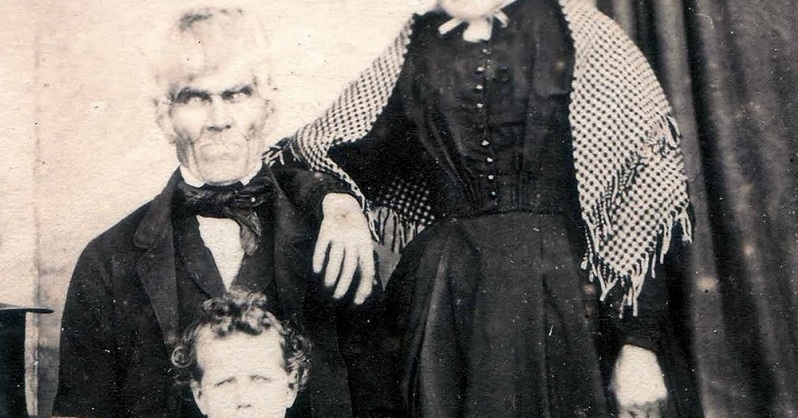
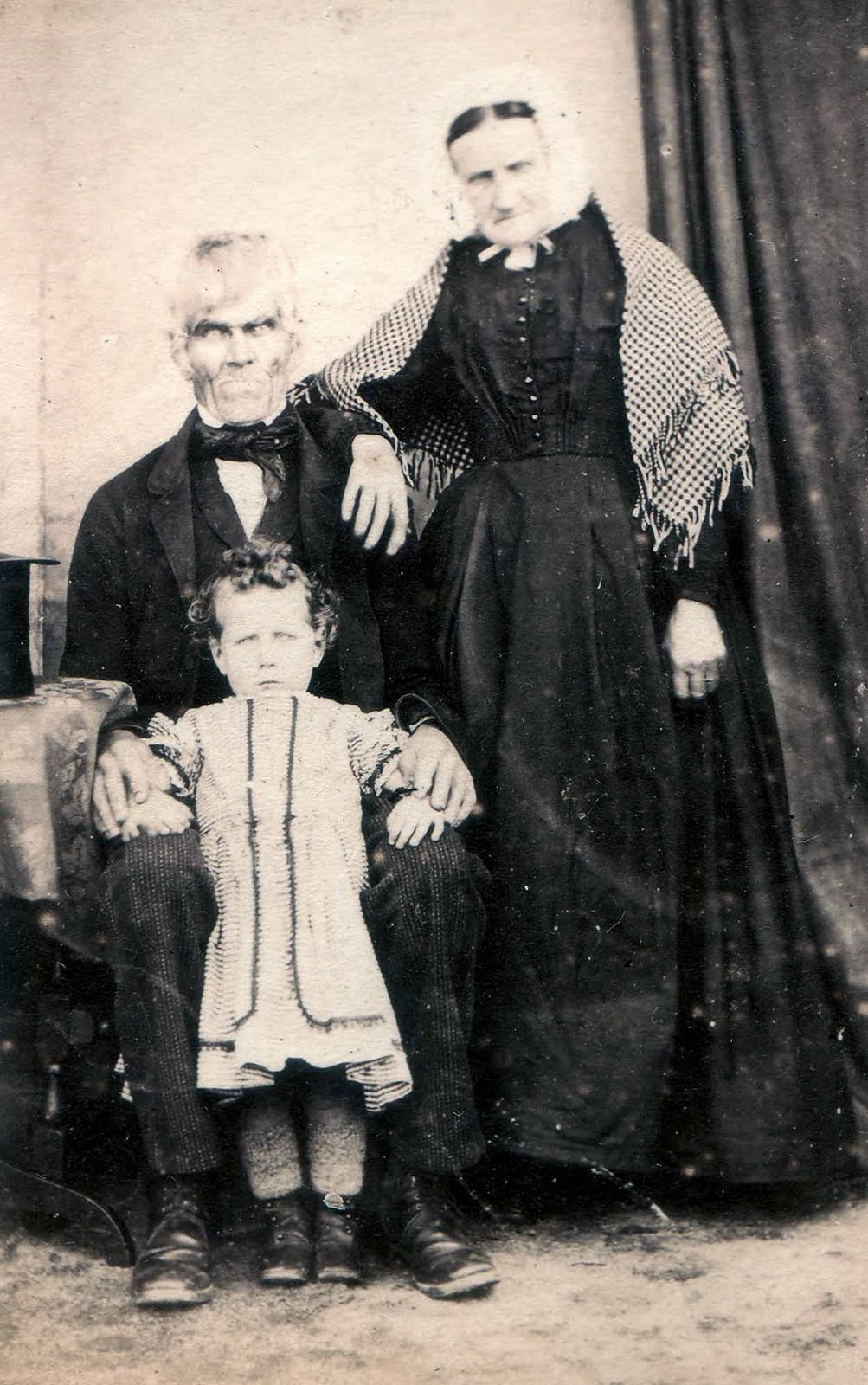
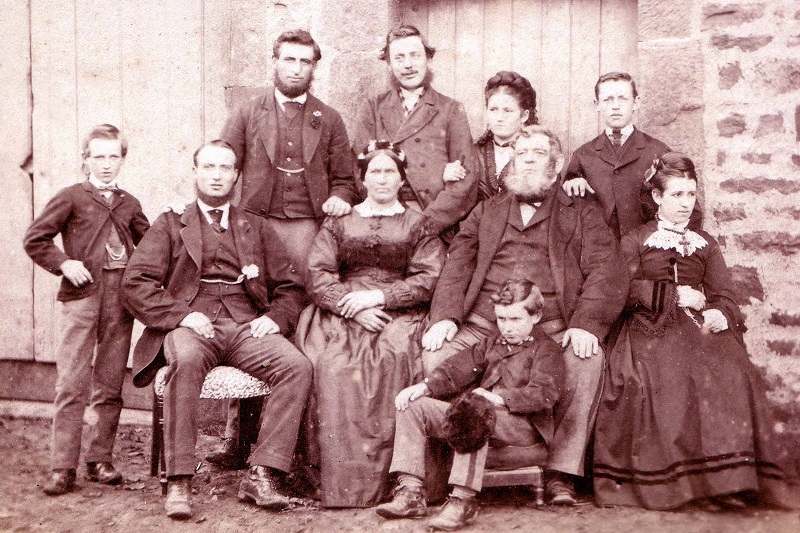
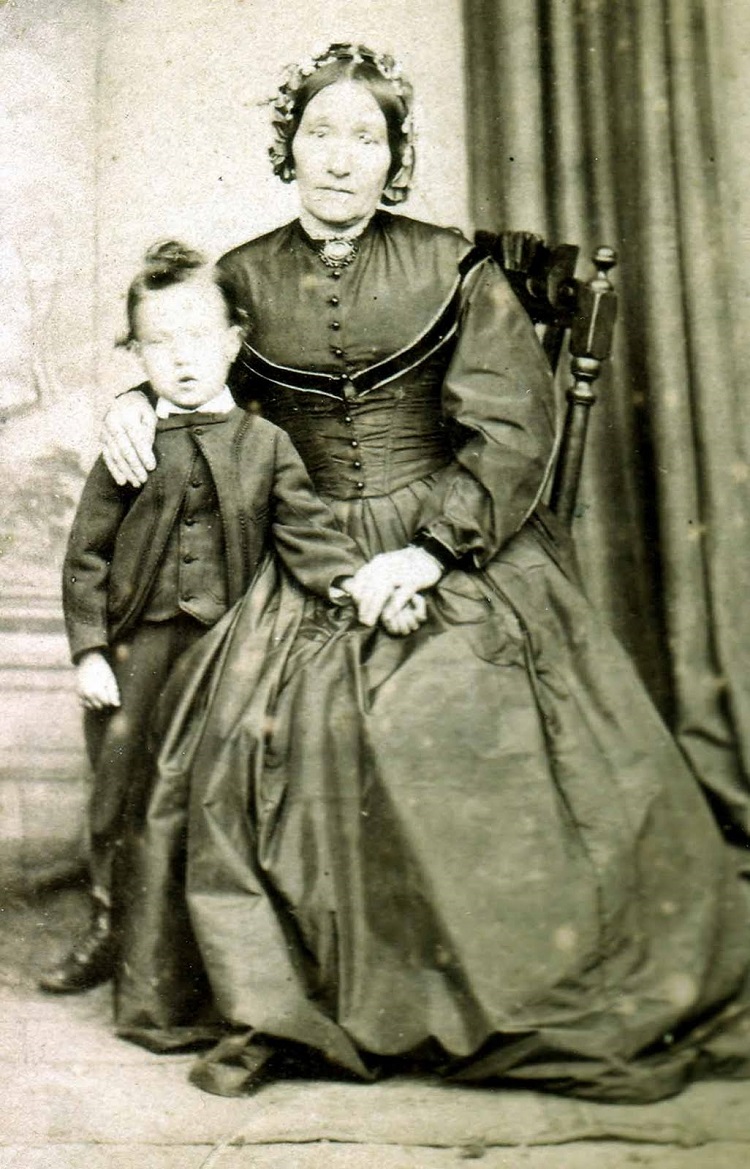
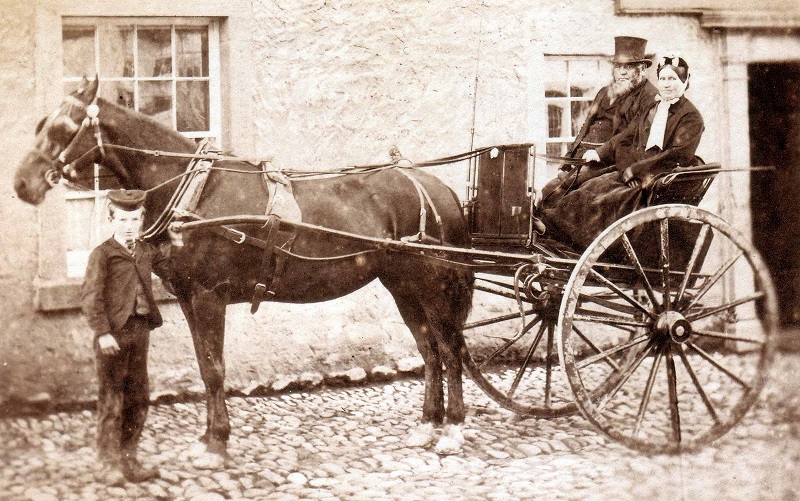
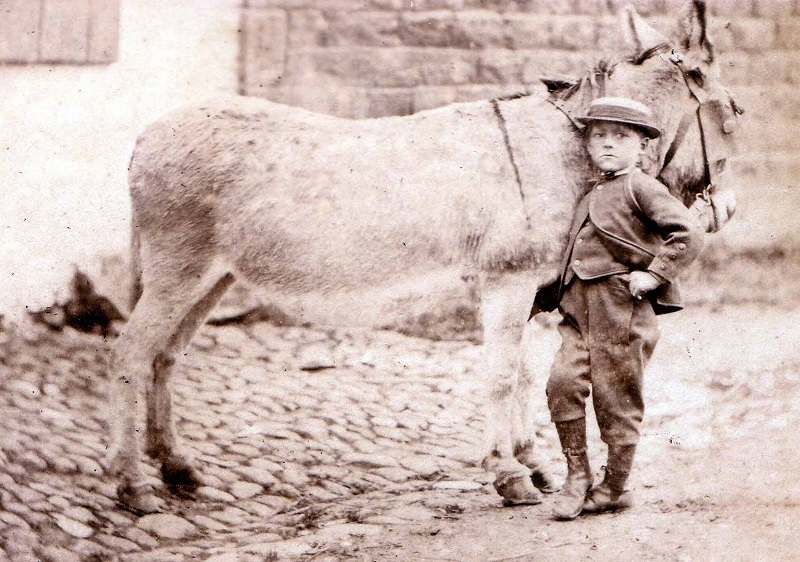
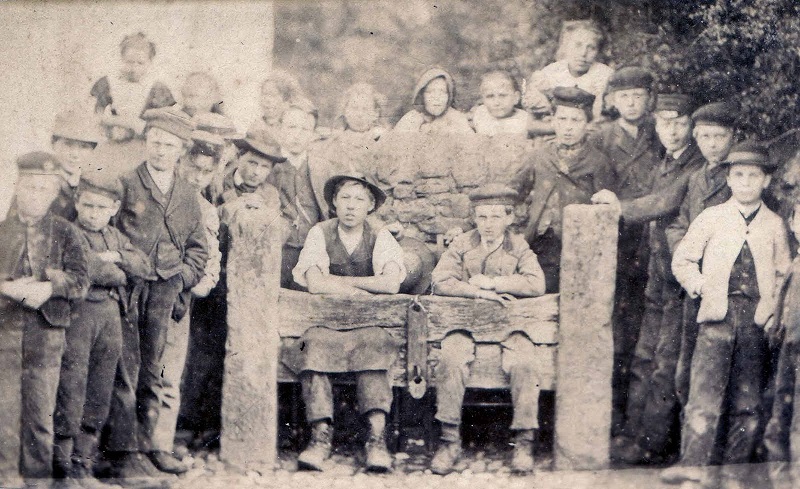
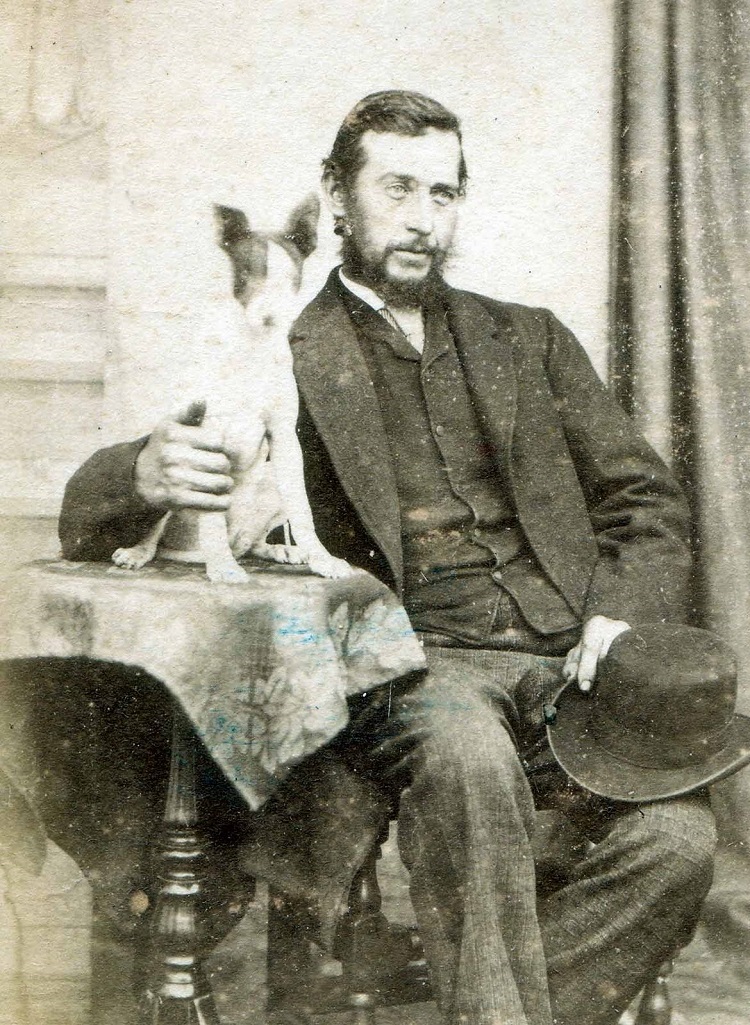
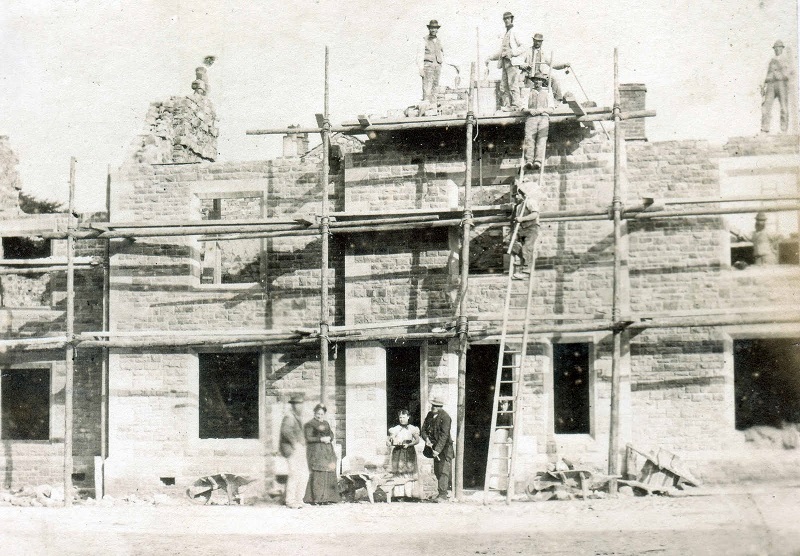
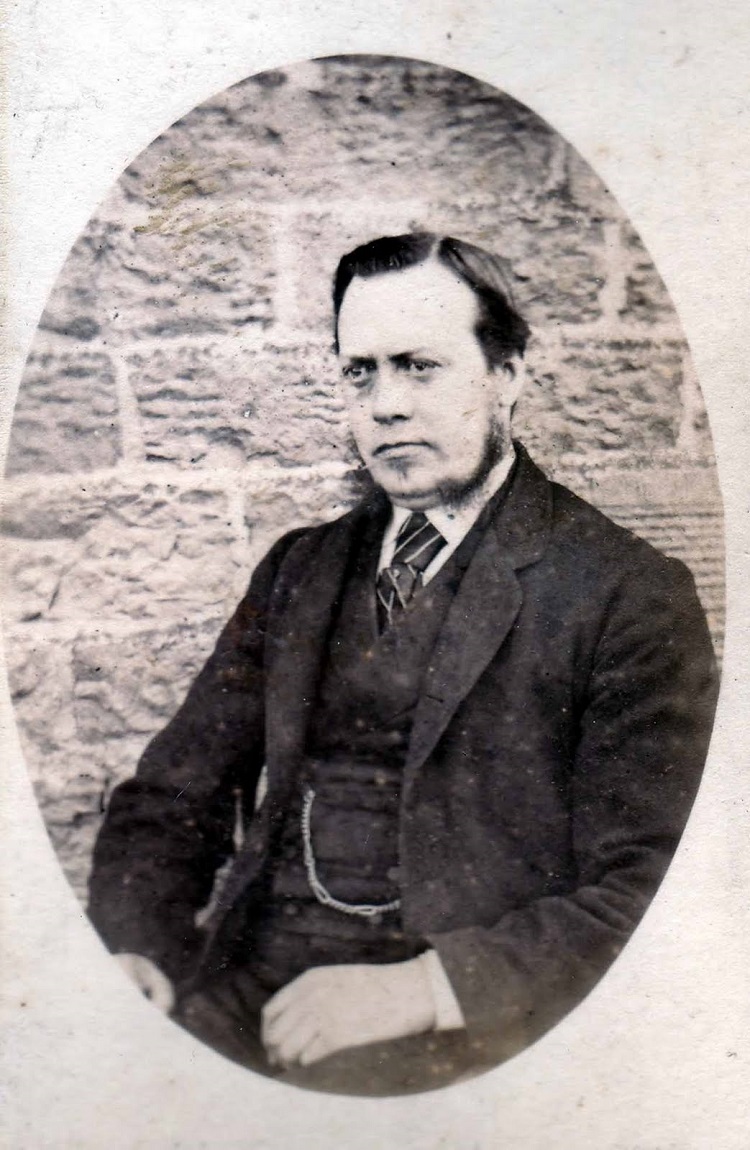
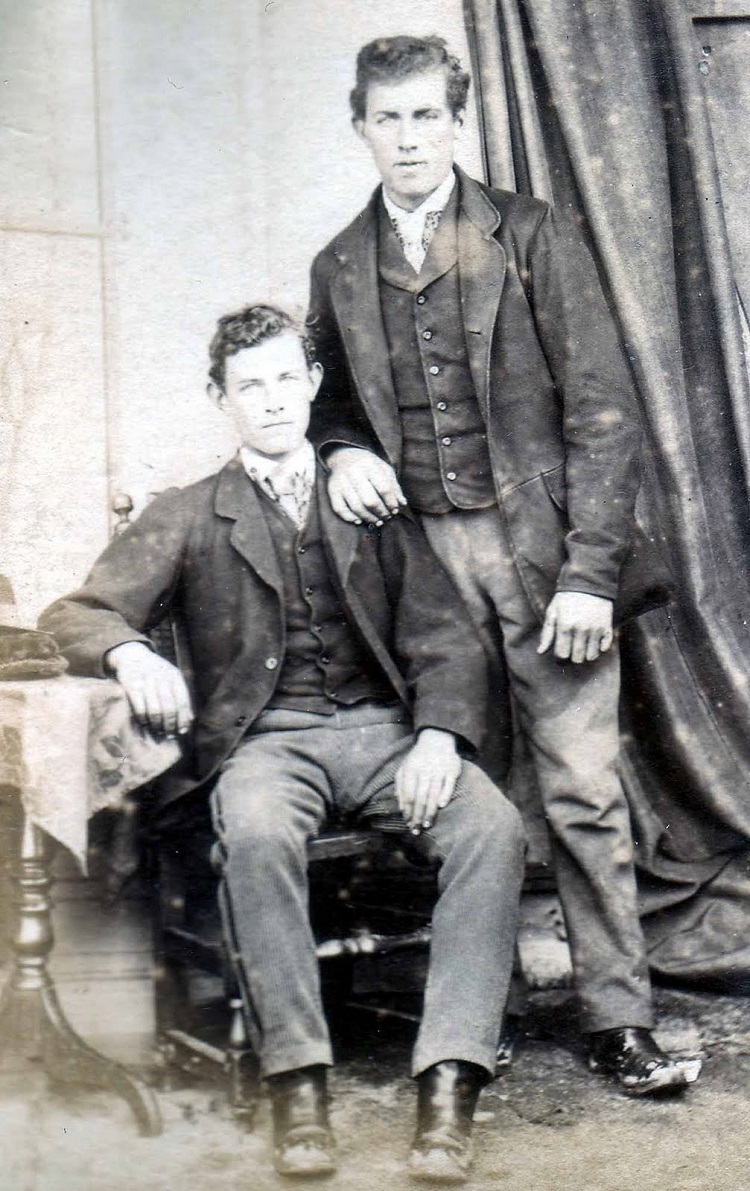
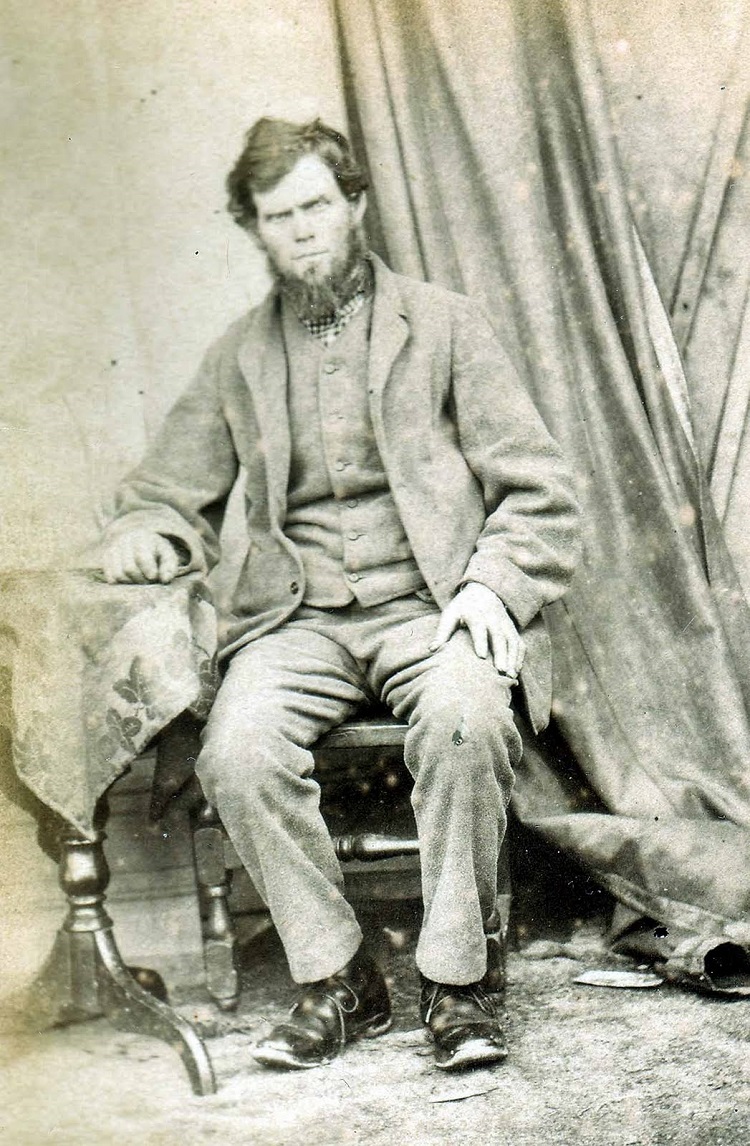
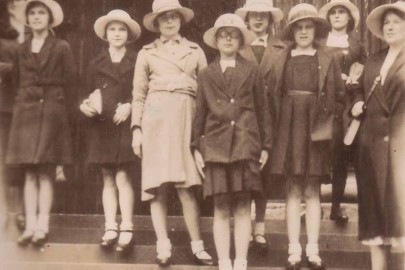
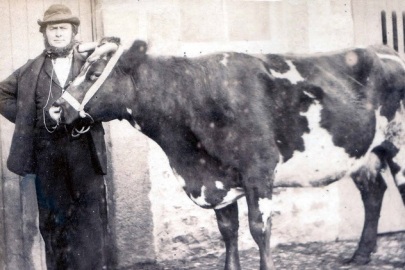
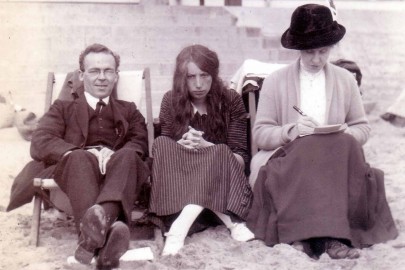







I think I’ve said before that I’ve long thought the Victorian reluctance to smile for the camera has influenced and exaggerated our association of the period with darkness and gloom, but that shot of the twenty urchins is too much. I’m assuming the two in front have their legs in old stocks and that there is therefore a “prank” aspect to the picture, yet all twenty seem to be channeling Cotton Mather. How did the photographer pull it off? Did he offer treats or threaten them with beatings?
A couple of the photos recall Lewis Carroll’s “Hiawatha’s Photographing”. And I wonder what, unless taxidermy, could get a small dog to sit still long enough for the process of that day. W
The underrated movie A Million Ways to Die in the West, has an elaborate subplot about why people don’t smile in period photographs (the movie is set in the 1880s). First, it takes a long time of sitting still to expose the film, and no one’s that happy. Second, smiling makes you look insane.
Seems about right.
(BTW, the commenting system is weird. First, it sticks my email into all three fields. When I tab from field to field to clear them, that works fine until my third tab to take me from the website field to the Comment field, at which point I’m back up at the top of the page.)
On the subject of taxidermy, there’s a debate on Twitter about the top picture (this post has caused a stir and been retweeted to over 20k people), and whether the bloke is actually dead.
The Victorians did have a craze for photographing the recently deceased in group pictures with their surviving relatives.
I’ve looked closely and I honestly can’t tell, but Steerforth has a theory that he just has cataracts, hence the staring eyes.